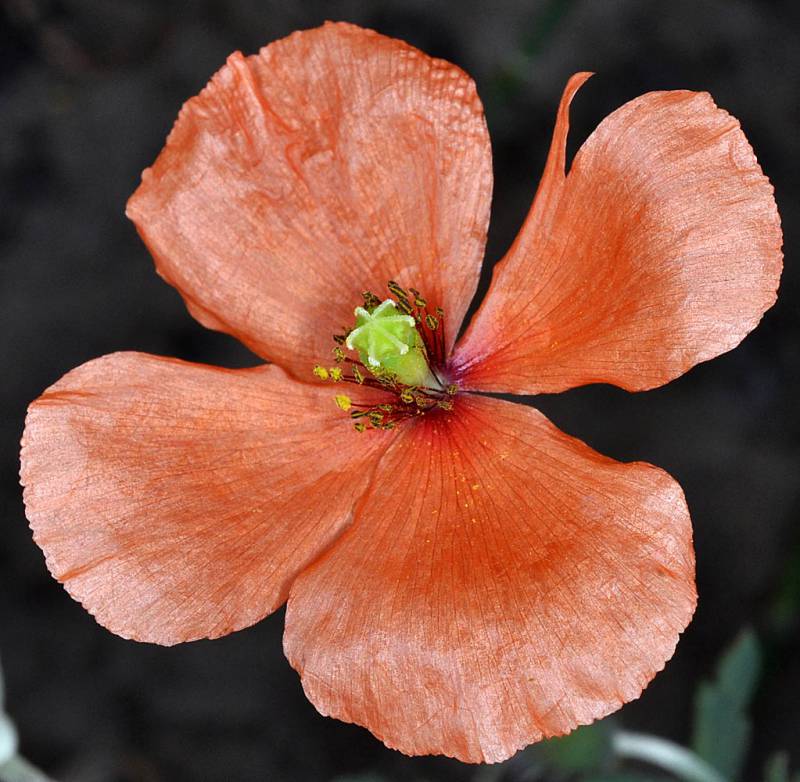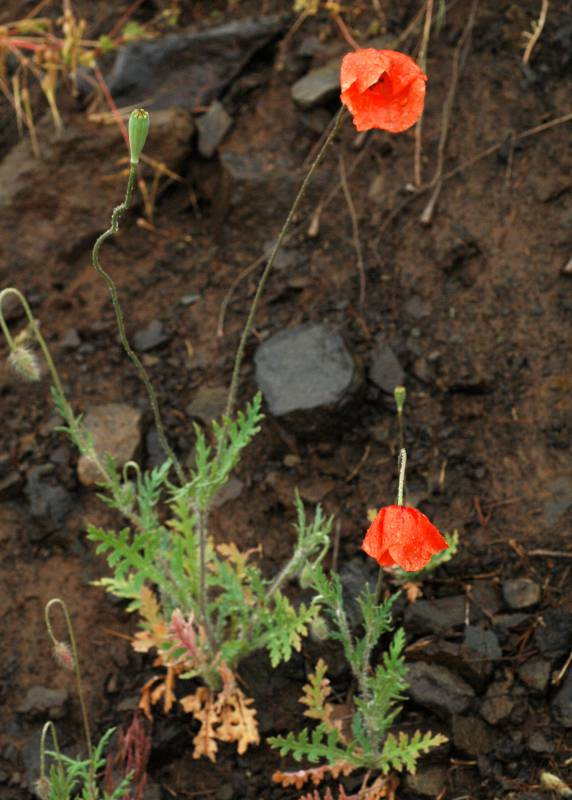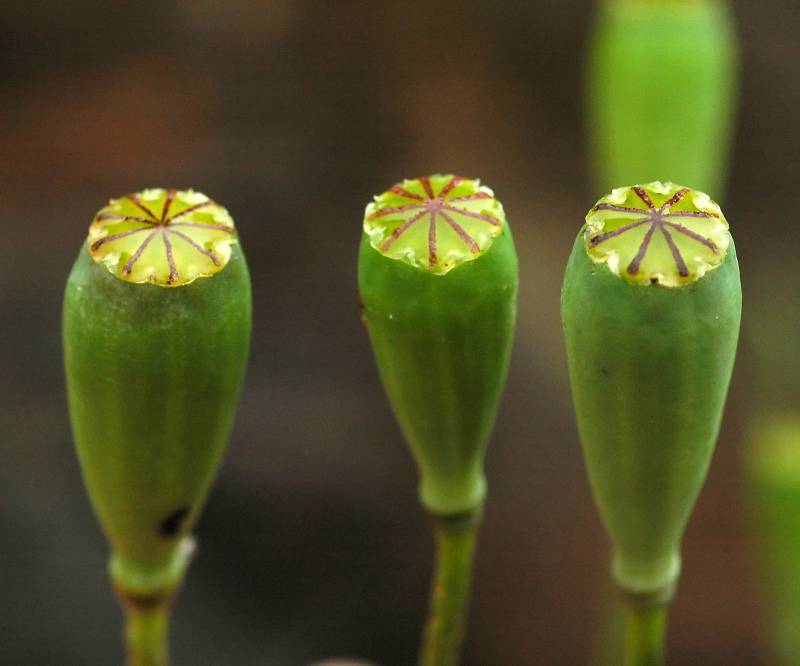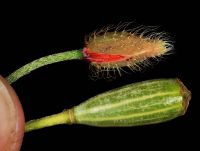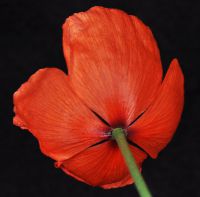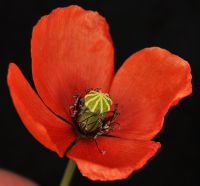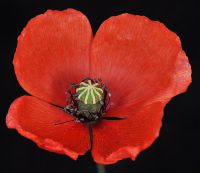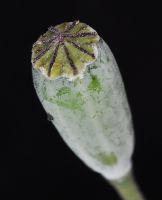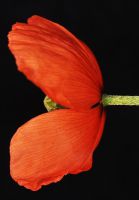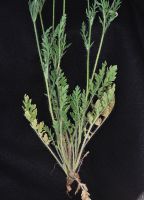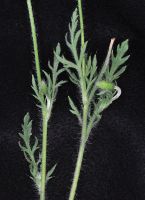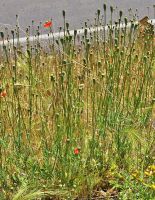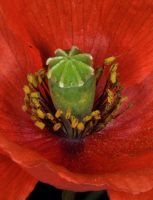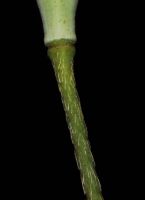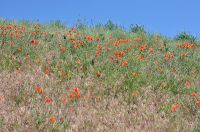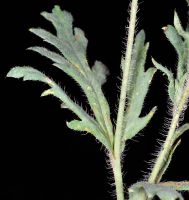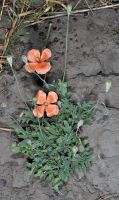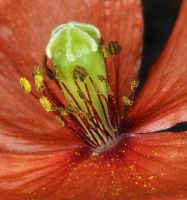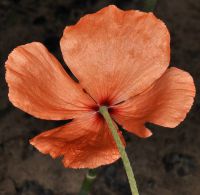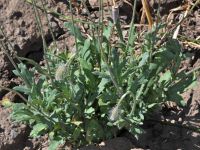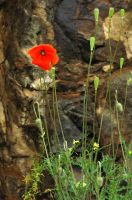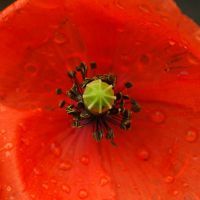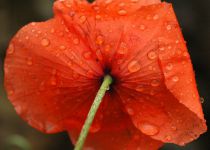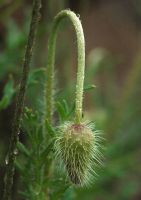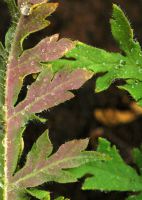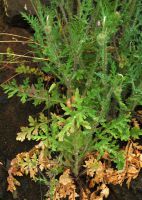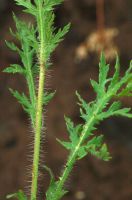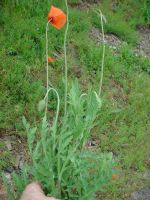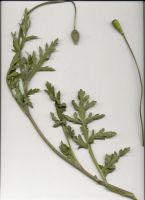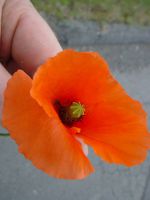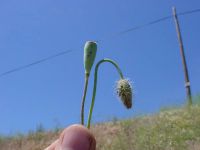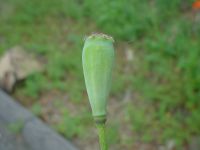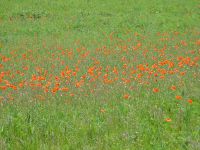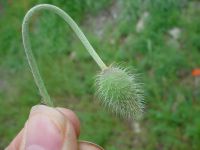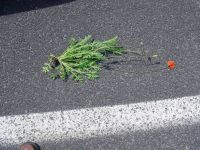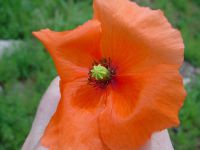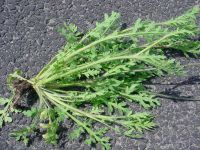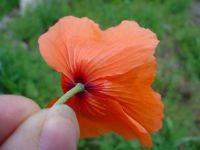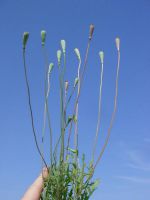Distribution: Occurring on both sides of the Cascades crest in Washington; British Columbia to Oregon east to Idaho; also in the central U.S. and eastern North America.
Habitat: Fields, dunes, marshy areas, roadsides, wastelots, and other disturbed sites.
Flowers: May-July
Origin: Introduced from Eurasia
Growth Duration: Annual
Conservation Status: Not of concern
Pollination: Bumblebees, bees
Annuals from taproots, the stems simple or branching, covered with appressed, stiff hairs, up to 7 dm. tall.
Basal leaves in a rosette, petiolate; cauline leaves alternate, the lower petiolate, becoming sessile upward; leaf blades to 20 cm. long, pinnately lobed, the margins with rounded teeth.
Flowers single or in 2s or 3s on long peduncles or scapes; buds nodding; sepals 2, distinct; petals 4, orange to red, without a dark basal spot, up to 3 cm. long; stamens many, the anthers violet; style none.
Capsules narrowly obovoid, distinctly ribbed, up to 2 cm. long, at least twice as long as wide.
Publication: Sp. Pl. 2: 1196. 1753.
PNW Herbaria: Specimen records of Papaver dubium in the Consortium of Pacific Northwest Herbaria database
WA Flora Checklist: Papaver dubium checklist entry
OregonFlora: Papaver dubium information
E-Flora BC: Papaver dubium atlas page
CalPhotos: Papaver dubium photos

